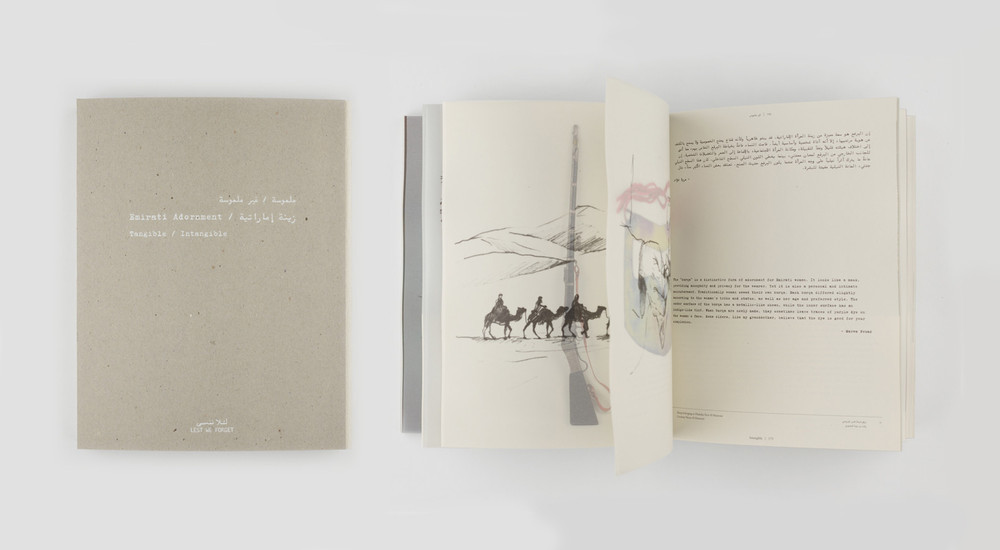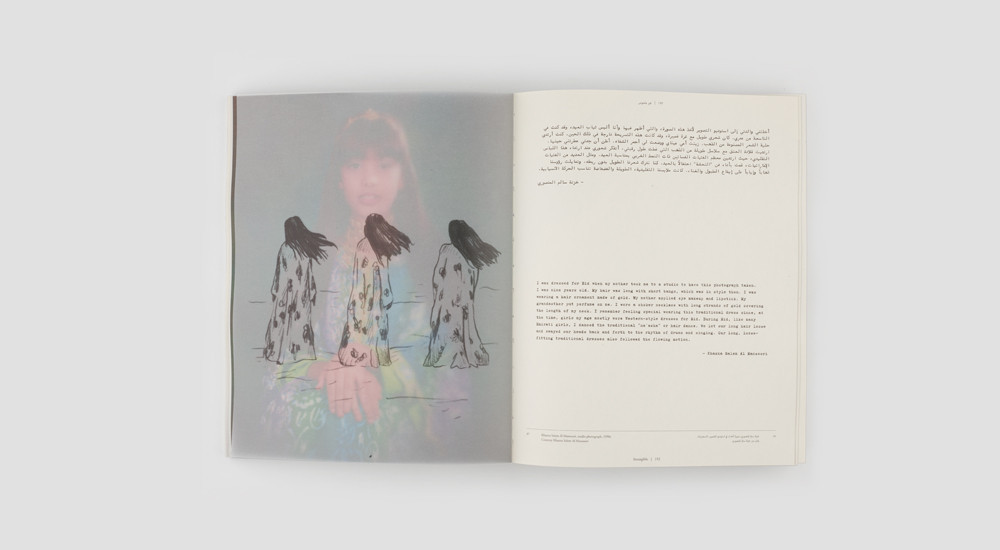

Emirati Adornment: Tangible and Intangible
Emirati Adornment: Tangible and Intangible presents a fascinating exploration of Emirati identity, aesthetics and cultural history as conveyed through various modes of adornment. Adornment speaks to a universal, deep-rooted desire to beautify, ornament, and embellish. The reasons for enhancing one’s appearance through adornment are profound. Modes of adornment can be culturally specific as well as personal. They can indicate tribal, religious, political, and national affiliations. They can distinguish social, economic, educational, and professional status. They can demonstrate aspirations, ethics, and achievements. Adornment is a multi-faceted, meaningful expression of identity.
The book broadly recognizes the compelling, dualistic nature of adornment, which can be either ‘tangible’ or ‘intangible,’ enduring or ephemeral. Tangible, physical, and lasting forms of Emirati adornment include garments, burqa, jewelry, weapons, attributes, accessories, and footwear. Intangible, temporal and impermanent forms of Emirati adornment include the application of henna, kohl, fragrance, and cosmetics, as well as grooming, nail care, and hairstyles.
Both tangible and intangible forms of Emirati adornment hold a valuable ‘intangible’ cultural heritage: the creative spirit, knowledge, skills and aesthetic sensibilities that have been passed down from one generation to the next. The book considers the circumstances and people who created, wore, and shared diverse forms of adornment. Emirati adornment, in all its complexity and beauty, is revealed through evocative personal examples with insights offered by Emirati people. These memories and reflections invite conversation about the significance of adornment as an exquisite form of traditional and contemporary cultural expression.
Heirs to a great oral history tradition, Emirati people have a knack for storytelling. The tangible photographs and objects are accompanied by intangible memories, stories and reflections. The tangible and intangible content of this compilation have grown out of sustained, in-depth, often lengthy conversations with the contributors, whose stories have been condensed into brief narratives with their consent. Each of these unique personal accounts forms part of this collective narrative about Emirati adornment. In stitching these disparate stories together, cultural insights are integrated to provide context and coherence. Thus these are not direct quotes by the contributors, but abbreviated accounts growing out of research and discussions with the Lest We Forget team.
This book explores Emirati adornment through the language of art. The contributors’ accounts are brought to life for readers through photographs and illustrations. Each entry comprises a ‘tangible’ or concrete element of adornment and an associated ‘intangible’ memory, experience, story, feeling, or thought. Tangibles are photographed; intangibles are represented through illustration and typed narratives.
Each illustration depicts that which is not seen in the photograph—the emotions, recollections, and thoughts inspired by the item. Impressionistic line drawings encourage readers to exercise their imaginations while reading. Tracing paper is used to illustrate abstract sentiments and impressions, because its blurry quality helps to convey the elusiveness of memories. It also allows readers to see through the line drawings to the photographs or textual passages beneath, depending on which way one turns the pages. Thus, as one leafs through the book, ‘tangible’ and ‘intangible’ merge through the layering of photograph, illustration, and type.


